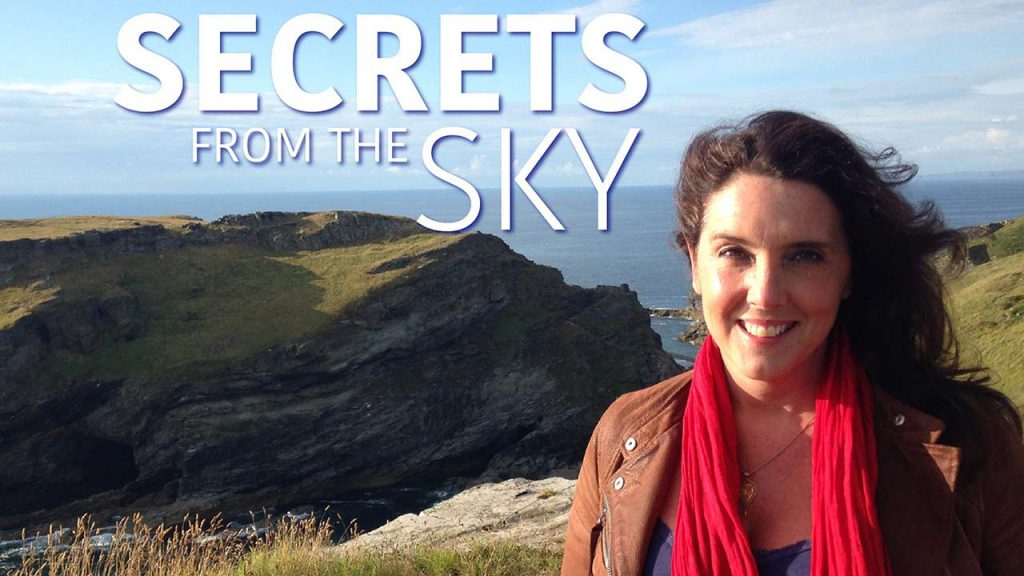Secrets from the Sky – Maiden Castle episode 4: Bettany and Ben visit Maiden Castle in Dorset to show evidence of its construction and composition, and how Iron Age Britain prospered and changed with the arrival of the Romans.
Britain is full of monuments and other buildings that have historical significance, some of which are explored in an unusual way on this show. Historian Bettany Hughes and aerial archaeologist Ben Robinson explore the sites from above using camera-equipped, remote-controlled helicopters.The top-down view of the locations helps link together clues on the ground, which can have a different meaning when viewed from above, to discover the full story of the landscape. The locations that are explored via a bird’s eye view include Tintagel Castle in Cornwall, Suffolk’s Sutton Hoo cemetery and Stonehenge.
Bettany Mary Hughes is an English historian, author and broadcaster, specialising in classical history. Her published books cover classical antiquity and myth, and the history of Istanbul. She is active in efforts to encourage the teaching of the classics in UK state schools. Hughes was appointed OBE in 2019.
Secrets from the Sky – Maiden Castle episode 4
Maiden Castle is an Iron Age hill fort 1.6 miles (2.6 km) south west of Dorchester, in the English county of Dorset. Hill forts were fortified hill-top settlements constructed across Britain during the Iron Age.
The earliest archaeological evidence of human activity on the site consists of a Neolithic causewayed enclosure and bank barrow. In about 1800 BC, during the Bronze Age, the site was used for growing crops before being abandoned. Maiden Castle itself was built in about 600 BC; the early phase was a simple and unremarkable site, similar to many other hill forts in Britain and covering 6.4 hectares (16 acres).
Around 450 BC it was greatly expanded and the enclosed area nearly tripled in size to 19 ha (47 acres), making it the largest hill fort in Britain and, by some definitions, the largest in Europe. At the same time, Maiden Castle’s defences were made more complex with the addition of further ramparts and ditches. Around 100 BC, habitation at the hill fort went into decline and became concentrated at the eastern end of the site. It was occupied until at least the Roman period, by which time it was in the territory of the Durotriges, a Celtic tribe.
After the Roman conquest of Britain in the 1st century AD, Maiden Castle appears to have been abandoned, although the Romans may have had a military presence on the site. In the late 4th century AD, a temple and ancillary buildings were constructed. In the 6th century AD the hill top was entirely abandoned and was used only for agriculture during the medieval period.
